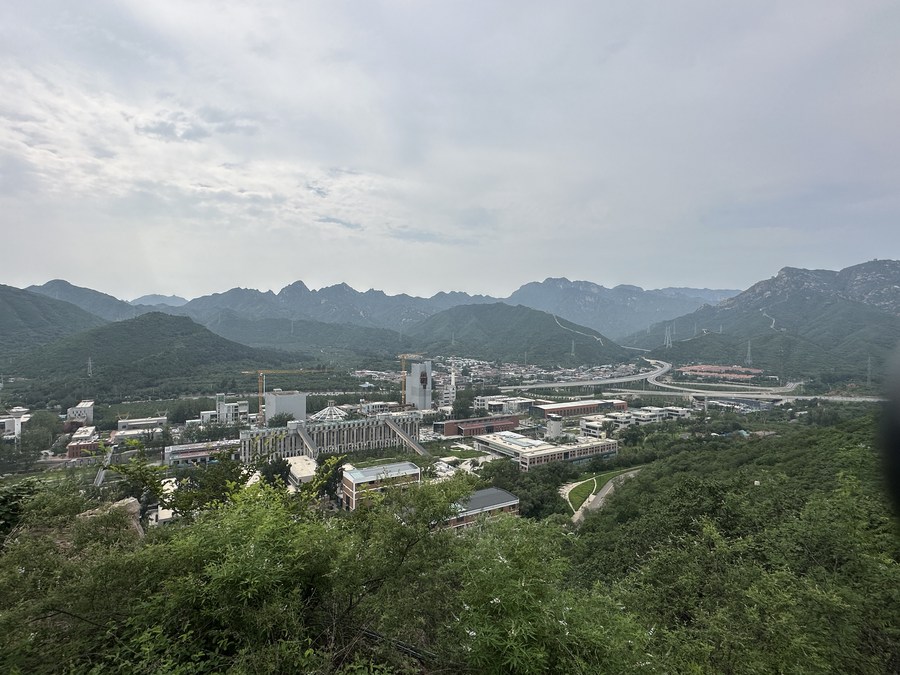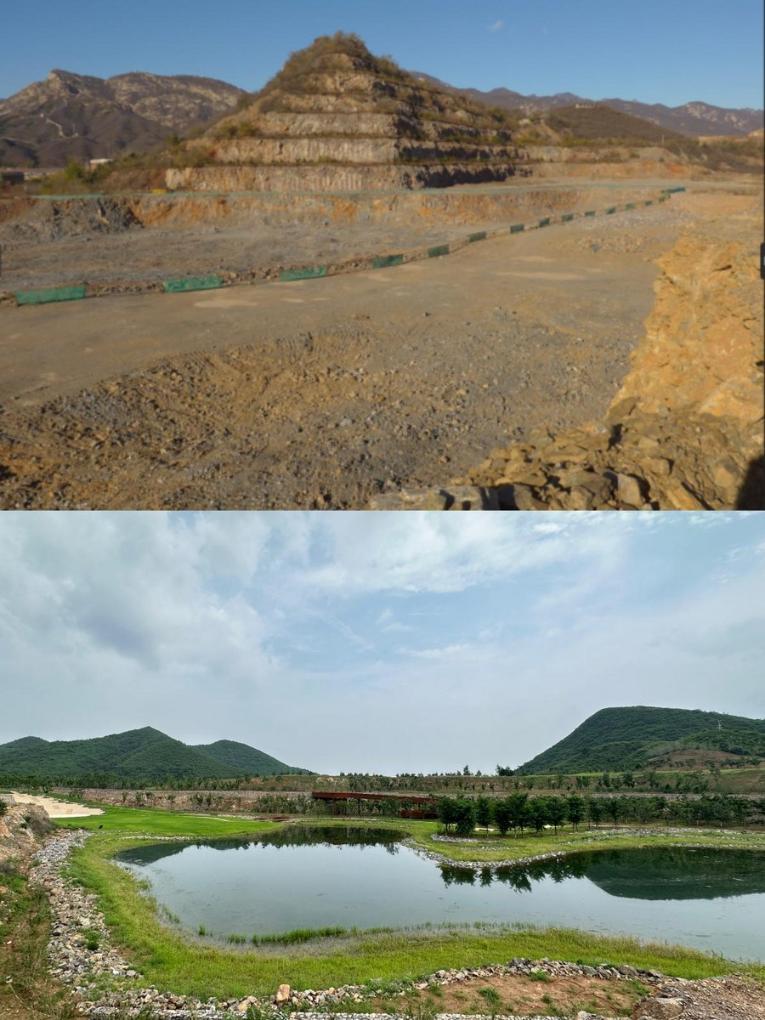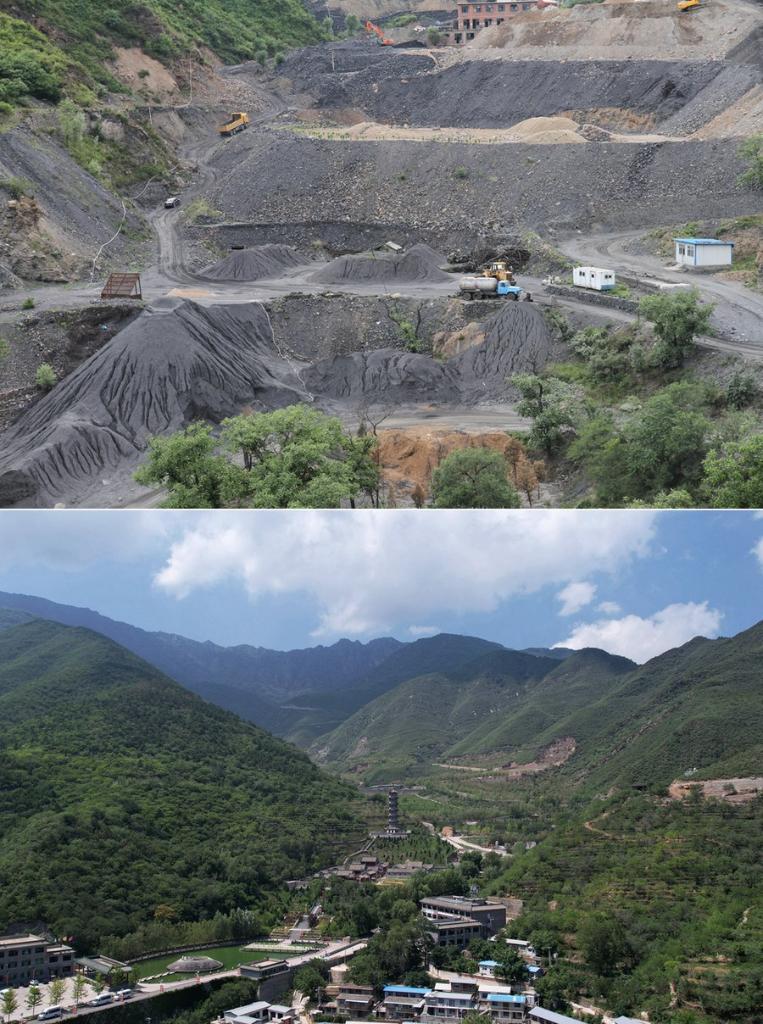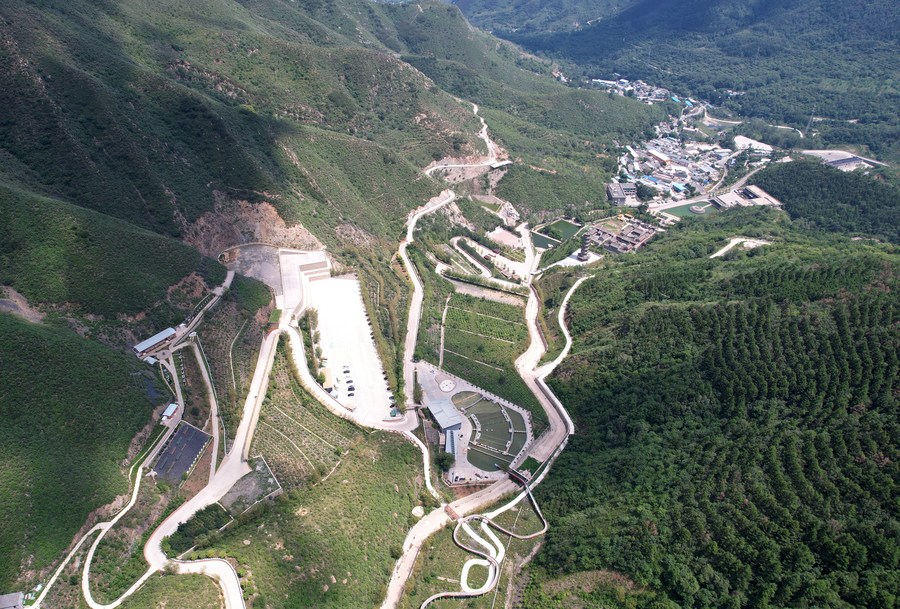Sci-tech park built on abandoned mine in Beijing's green transition
*Beijing, the city once at the edge of desertification, has paid great efforts of greening.
*Since 2017, Huairou District carried out a strategy to develop into Beijing's sci-tech base.
*A former quarry mine has been built into a popular tourist resort in Beijing's Fangshan District.
BEIJING -- Bart Vlaar, a Dutch mathematician, eagerly anticipates the arrival of his family in September. They will live with him in a modern sci-tech park, which was built on a former cement plant on the outskirts of Beijing.
Vlaar and his colleagues in the Yanqi Lake Beijing Institute of Mathematical Sciences and Applications moved into the park in May. They were immediately attracted by the work environment, which features a blend of gardens and a renascence of the mining industrial heritage.

This photo taken with a mobile phone shows the Jinyu Xingfa sci-tech park in Beijing, capital of China, Aug. 4, 2023. [Xinhua/Tian Chenxu]
"I think it is very interesting and remarkable to transform a place with so many 'industrial relics' into modern office space," he said.
The preservation of the industrial heritage, which is rooted in quarry mining for cement production, is accompanied by the protection of its intangible heritage.
Yu Dewang who had worked in the cement factory since 1990s is now a security manager of the sci-tech park.
He can see that the mining area has been transformed into a green space, featuring an artificial lake in the center. Additionally, the former workshops and warehouses have been repurposed and now house modern offices and apartment buildings.

Photo taken on May 10, 2017 shows the quarry mine pit before transformation at the Jinyu Xingfa sci-tech park in Beijing, capital of China (above) and photo taken with a mobile phone by Xinhua correspondent Tian Chenxu shows the artificial lake transformed from quarry mine pit at the same park, Aug. 4, 2023 (below). [Xinhua]
"The factory was filled with hustle and bustle, churning out cement products day and night. Fully loaded trucks never stopped plying the road until it was closed in 2015," said Yu.
He said the cement plant in Beijing's suburban district of Huairou is a major supplier to many of landmark projects in the national capital, which includes such facilities as the Beijing Capital International Airport Terminal 2 and the National Stadium, also known as the "Birds' Nest."
"However, the high output was achieved at the debt of pollution and ecological deterioration," said the 53-year-old, who refused to leave after the factory was shut down in 2015 along with a number of other industrial polluters in Beijing.
Since 2017, Huairou District carried out a strategy to develop into Beijing's sci-tech base. This scheme includes kicking off a large-scale ecological restoration project that encompasses the site of the cement plant located north of the Yanqi Lake.
"We are inviting research institutions and high-tech companies to move in to develop the park into a center of international exchanges on science and technology," said Zou Ming, general manager of Beijing Jinyu Xingfa Technology Co., Ltd., which is in charge of the management of the sci-tech park.
Similar stories of transformation have been going on amid Beijing's green development. A former quarry mine has been built into a popular tourist resort in Beijing's Fangshan District.

Photo taken on June 14, 2012 shows the Caojiafang mining site in Beijing, capital of China (above) and photo taken by Xinhua correspondent Zhang Chenlin shows the Bairuigu resort transformed from Caojiafang mining site on July 24, 2023 (below). [Xinhua]
"There was only one willow tree left when the mine was operated, but now, the valley is blanketed with natural greenery," said Wang Zhenhua, general manager of the former Caojiafang quarry and the current Bairuigu resort opened in 2019.
Nestled the shade of woods, the location of the former entrance of the mining pit has been marked and decorated with sculptures. Additionally, a nearby building where miners changed shifts is now used as an exhibition hall to tell the story of its mining history. Further into the resort, there are amusement sites such as a dinosaur world, a rafting experience program and an animal feeding park.
Tuesday coincided with China's first National Ecology Day. The country's top legislature on June 28 voted to designate Aug. 15 as National Ecology Day, aiming at enhancing public awareness and actions to protect the ecological environment.

This aerial photo taken on July 24, 2023 shows the Bairuigu resort transformed from Caojiafang mining site in Beijing, capital of China. [Xinhua/Zhang Chenlin]
Beijing, the city once at the edge of desertification, has paid great efforts of greening. Its forest coverage has surged to 44 percent by the end of 2019 from about 1.3 percent in the 1950s. Over the past five years, Beijing has outstripped the target of the 1-million-mu (66,667 hectares) tree plantation, according to the city's government work report this year.
Video reporters: Li Dexin, Guo Peiran, Zhang Chenlin, Zhao Xu; Video editors: Zhang Yucheng, Luo Hui, Zhu Jianhui
























